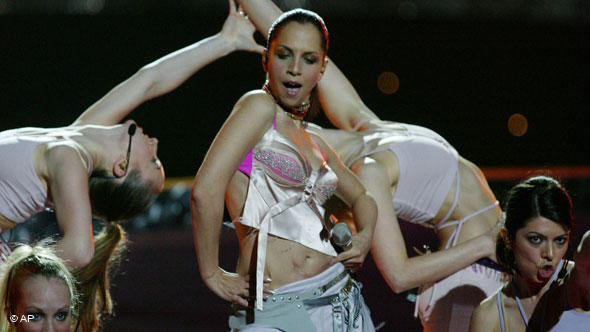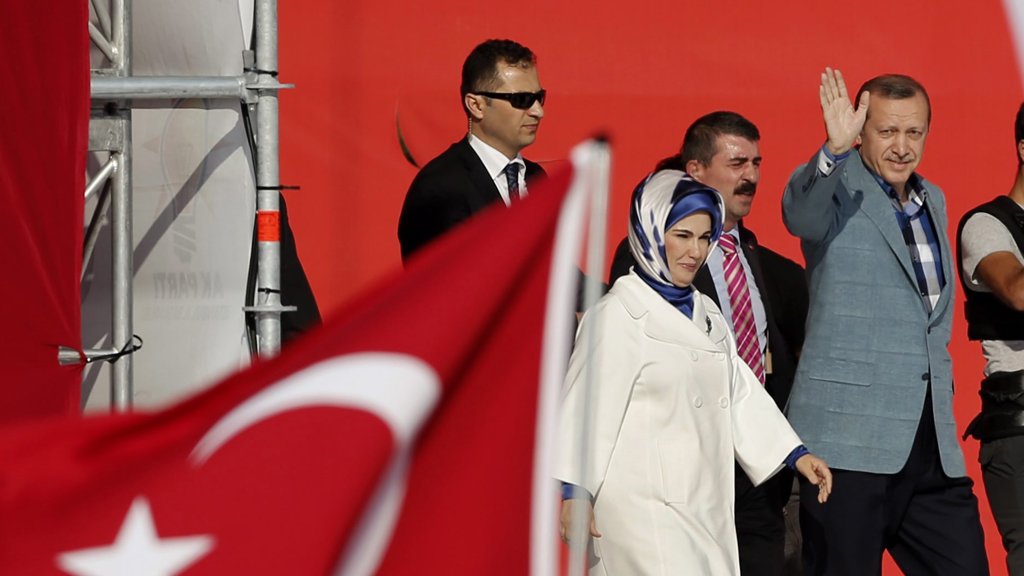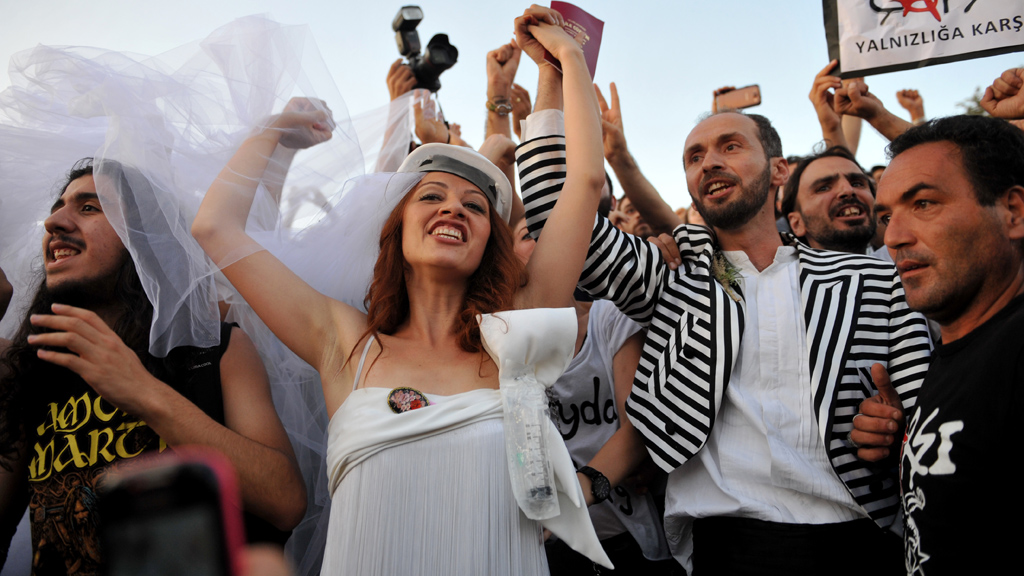The end of Cool Istanbul

Just as in other intellectual geographies, Turkish thinkers and cultural actors have always been fond of dipping into debates about identity matters. The main split of consciousness that gnaws away at the question of Turkish identity is considered to be the tension between an "imposed Westernisation" and a "repressed Oriental identity". In the eyes of many, the collateral damage caused by the top-down modernising ardour of Kemalism resulted in a tremendous cultural wealth being swept under the carpet of a makeshift modernism.
But this very idea of a dichotomy had largely been left unaddressed until the AKP's accession to power in 2002, which brought to the fore a new globalist political agenda that hoped to introduce a post-modern, moderate Islam. Tearing down every policy that belonged to the ancien regime, Recep Tayyip Erdogan's iconoclasm also bred a new intellectual atmosphere within which this "repressed" Oriental identity – which was at odds with forced Westernisation – was able to re-emerge.
From this collective subconscious erupted eager explorations of the possibility of modernism to rise from the East. This was reflected in continuous condemnations of the legacy of the oppressive cultural policies of Kemalism. Although the country's belonging to the East still remained in question – from Nobel laureate Orhan Pamuk's playful meditations on the rupture of the Turkish historical consciousness to Elif Shafak's elegies to bygone Istanbul cosmopolitanism – a nostalgia revolving around the Ottoman past became a popular theme in both the arts and in literature.
The inflow of international capital along with the peaking interest of national big business in opening arts spaces and museums highlighted Istanbul as an emerging nexus of culture and arts, stemming in part from the financial developments Erdogan was so proud of.

This pride was so boundless that he even declared that the global economic crisis would "pass at a tangent to Turkey". After 2006, "Cool Istanbul" was the name of the game: Turkish artists found themselves on the A-lists of international buyers, and corporate-sponsored museums sprang up all over the city. Finally, Istanbul was taking solid steps towards becoming the new "It" city of the Middle East.
Music also played a role in the fever. The pop music front welcomed the so-called "New Sound of Istanbul", a label applied to a group of artists investigated by Fatih Akin in "Crossing the Bridge" This wave was carried forward by bands such as Baba Zula and Replikas, who sought to pay homage to the creativity of 1970s Turkish psychedelica. Turkish expatriates such as Swiss resident and percussionist Burhan Öçal or New York's İlhan Erşahin, famous for their personal "East and West" syntheses, were already at the forefront of Turkish cultural production abroad.
The government, of course, was hardly as open-minded as the cultural actors they keenly advertised abroad with numerous cultural openings from the big "Turkish Season" in Paris to strings of Turkish Film Weeks in European capitals.
AKP spokespersons did not hesitate to drop remarks about the "double standards" of the West, using arts and culture as background noise to their revanchist and nationalist rhetoric. However, they were seemingly unaware of the fact that, as far as the relatively urbanised and Westernised consumers of culture were concerned, they had almost none of the "soft power" they enjoyed in the Balkans and the Middle East. Yet, even the duplicitous Istanbul Capital of Culture could not ruin the celebratory atmosphere.
Hybridity, metissage, synthesis, cosmopolitanism, glocality, East versus West, Islam versus modernity ... this are the themes that the bulk of Turkey's artists was almost obsessively fixated on up until 2013. In reality, everybody was well aware that this overdue celebration was driven in part by the power of the discourse of globalism, and that the excitement might well have an expiry date. The most mainstream spillovers of this soaring cultural production had a story to tell.

Sertab Erener's Eurovision performance in harem girl garments, embodying the ages-long objet du désir of Orientalism and the Anatolian Fire dance shows that marketed the image of Anatolia as the abode of fraternity were more obvious examples. On the more latent side, Mercan Dede's Sufi-Electronica synthesis made the most out of the Western fascination with Rumi and Sufism while raising questions about authenticity. Yet many indeed proved that the substance of the renaissance of Turkish cultural production was as touristic and as self-orientalising as the belly dancing dinner shows in Galata where tourists pay to watch what they think represents a great part of Turkish culture.
Then, one auspicious day in May 2013, while the AKP was getting ready to put an end to the "Kurdish question", the bubble burst. In recent years, the mind-set that had dictated the AKP's decisions had already been called into question – mainly due to Erdogan's increasingly hostile and alienating remarks and actions directed against various groups, including a significant part of society that was worried about seeing its freedoms usurped by a government with authoritarian ambitions in a liberal guise. While eight years ago, Erdogan seemed to have convinced the crowd that he had changed and had left his radical tendencies behind for a moderate "conservative-democratic" stance, the show he put on demonstrated that the masquerade was over.
Spreading like wildfire to almost every part of the country, the energy unleashed by the Gezi Park protests shattered the last remnants of the AKP's tolerant and moderate façade. The outcome – nine dead and thousands wounded – revealed the scale of Erdogan's hubris as well as the pathetic state of Turkish mainstream media with regards to upholding journalistic ethics and standards. While parts of Istanbul were literally burning, major TV stations – including CNN Turk, the Turkish partner of CNN International – opted for airing TV series or documentaries on arctic wildlife (or in the case of another major TV station, an interview with President Erdogan himself where the interviewer did his best to condemn the protests).
When the hypnosis wore off and people woke up from their decadent dream, Gezi functioned as a kind of magical moment: Istanbul had, beneath its cool façade, been turned into the AKP's experimental playground, upon which the party was determined to erect a cement dystopia – a flawlessly gentrified neo-liberal haven. While the protests spread, the demolition/gentrification of Tarlabaşi – a marginalized European side district – continued, adding to the string of urban renewal projects launched by the AKP.

With an urban development credo that stipulates that newer, shinier and ever more vast shopping malls must spring up at every corner, the AKP had been more than allergic to green spaces. However, as the protesters repeated a million times, Gezi was not about a bunch of trees. Erdogan's insistence on razing the tiny green breathing space that was Gezi was the straw that broke the camel's back. More shockingly, faced with the danger of instability caused by the acts of the government, the global cash-flow that once was instrumental in creating the buzz around Cool Istanbul could stop pouring into the country in a second. How could a government that reacted in such a way be in a position to inspire a renewal in the domain of culture?
Fed by genuine emotions and attitudes, the Gezi Park protests seemed to represent an eruption from below, and became the stage for some stunningly diverse artistic performances. The performances themselves – flash mobs, resistance anthems or impossible-to-categorise manifestations of instantaneous creativity on the streets – could certainly not usher in a new era by themselves. This explosion, which was impossible to tuck into the confines of any clean-cut political path, did not come with a manifesto or aesthetic dictum of its own – Gezi was rather an alliance of the unhappy cemented by feelings of mutual respect and solidarity. However, as the protests dissolved the shroud of the AKP zeitgeist, they raised questions about the need for new directions in the domain of culture.
The Aesthetics of Resistance exhibitions hosted by a handful of galleries in Istanbul (located mostly outside the circuit on the European side) were able to demonstrate how tame, tedious and uninspiring institutional art has become. In the end, the dialogue that was so fervently circulated about the East and the West was only tangential to reality. Even the Gezi playlists, which were compiled by various publications, were able to demonstrate the lust for life embodied in the unyielding creativity of Gezi. From Bogaziçi Jazz Choir's protest hymns to Dubstep anthems, the music in those playlists was challenging, irreverent of dull categorisations, almost always full of caustic humour and, most importantly, re-defined the boundaries of protest music in Turkey.
In essence, what Gezi showed was that there was a specific space in the urban reality, in the contemporary era we live in, for genuine, defiant and fresh art that does not seek to be amplified by global agendas or governmental ambitions. Self-Orientalising rumblings – from the kitschiest to the more serious – though seemingly tough on the oppressive modernism within, are bereft of a solid critical angle. They cater to an audience (and desire to create one in the absence of it) that seeks to engage in barren dialogue with a limited understanding of the vastness of culture and the state of politics: the discussions that popped up around the particular subject of East and West were obfuscating, rather than mind-opening.
Engaging the now, on the other hand, can be more rewarding than obsessing over identity matters – or whatever is served as food for thought by the global succession of trends. It may be a long-forgotten truth, but art can remain caustically critical. It can shake and inspire the masses without reverting to populism or kitsch.
Mutlu Yetkin
© Babelmed 2014
Editor: Aingeal Flanagan/Qantara.de
